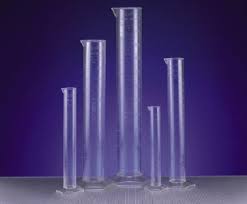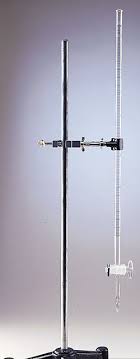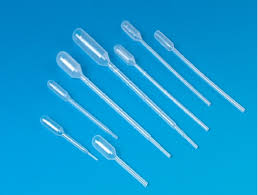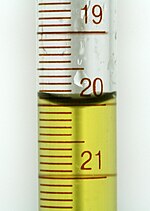Wednesday, March 31, 2010
Zero Error
There are two types of zero errors: Positive zero error & Negative zero error.
Positive zero error: The jaws of the vernier calipers are closed and the zero marking on the vernier scale falls to the right of the zero marking on the main scale.
Negative zero error: The jaws of the vernier calipers are closed and the zero marking on the vernier scale falls to the left of the zero marking on the main scale.
How to read the vernier calipers when there is a postive zero error:
For example, if the third vernier mark coincides with a mark on the main scale, it means that the zero error is + 0.03cm
How to read the vernier calipers when there is a negative zero error:
For example, if the eighth vernier mark coincides, the zero error is -0.02.This is because the zero error is two divisions from the tenth division.
Source: Lower Secondary Science Matters
published by Marshall Cavendish Education
Using the Vernier Calipers
 1. Close the jaws of the vernier calipers. Ensure that the zero marking on the vernier scale is in line with the zero marking on the main scale.
1. Close the jaws of the vernier calipers. Ensure that the zero marking on the vernier scale is in line with the zero marking on the main scale.2. Place the object within the jaws of the vernier calipers and clamp it firmly in place.
3. Read the length.
Inside jaws: Used to measure the internal diameter of an object.
Outside jaws: Used to measure the external diameter or width of an object.
Tail: Used to measure the depth of an object/hole.
Main scale reading: The main scale gives measurements of up to one decimal place.
Vernier scale reading: The vernier scale gives measurements of up to two decimal places.
go to http://www.physics.smu.edu/~scalise/apparatus/caliper/tutorial/simulation.html to try the vernier caliper simulation!
Source: Lower Secondary Science Matters
published by Marshall Cavendish Education
Vernier Calipers

Vernier calipers are used to measure short lengths and diameters of objects.
Vernier calipers can provide a more accurate measurement than the metre rule. The smallest division on the vernier scale is 0.01cm, whereas the smallest division on the metre rule is only 0.1cm.
Source: Lower Secondary Science Matters
published by Marshall Cavendish Education
Tuesday, March 30, 2010
Burette, Pipette & Measuring Cylinder
The buret is commonly used in titrations to measure precisely how much liquid is used.
 Measuring Cylinder
Measuring Cylinder  Burette
Burette  Pipette
PipetteSurface tension
Surface tension is a property of the surface of aliquid. It is what causes the surface portion of liquid to be attracted to another surface, such as that of another portion of liquid (as in connecting bits of water or as in a drop of mercury that forms a cohesive ball).
Surface tension is caused by cohesion (the attraction of molecules to like molecules). Since the molecules on the surface of the liquid are not surrounded by like molecules on all sides, they aremore attracted to their neighbors on the surface.
Applying Newtonian physics to the forces that arise due to surface tension accurately predicts many liquid behaviors that are so commonplace that most people take them for granted. Applyingthermodynamics to those same forces further predicts other more subtle liquid behaviors.
Surface tension has the dimension of force per unit length, or of energy per unit area. The two are equivalent—but when referring to energy per unit of area, people use the term surface energy—which is a more general term in the sense that it applies also to solids and not just liquids.
In materials science, surface tension is used for either surface stress or surface free energy.
Meniscus
Meniscus, plural: menisci/meniscuses, from the Greek for "crescent", is a curve in the surface of a molecular substance and is produced in response to the surface of the container or another object. It can be eitherconcave or convex. A convex meniscus occurs when the molecules have a stronger attraction to each other than to the container.[1] This may be seen between mercury and glass in barometers.[1] Conversely, a concave meniscus occurs when the molecules of the liquid attract those of the container. This can be seen between water and an unfilled glass. One can over-fill a glass with water, producing a convex meniscus that raises above the top of the glass, due to surface tension.
Capillary action acts on concave menisci to pull the liquid up, increasing the amount of energetically favorable contact area between liquid and container, and on convex menisci to pull the liquid down, reducing the amount of contact area. This phenomenon is important in transpirational pull in plants. Honey, water, milk etc. have a lower meniscus. When a tube of a narrow bore, often called a capillary tube, is dipped into a liquid and the liquid “wets” the tube (with zero contact angle), the liquid surface inside the tube forms a concave meniscus, which is a virtually spherical surface having the same radius, r, as the inside of the tube. The tube experiences a downward force of magnitude 2πrdσ
When reading a scale on the side of a container filled with liquid, the meniscus must be taken into account in order to obtain a precise measurement. Manufacturers take the meniscus into account and calibrate their measurement marks relative to the resulting meniscus. The measurement is taken with the meniscus at eye level to eliminate parallax error, and at the central point of the curve of the meniscus, i.e. the top of the meniscus, in the unusual case of a liquid like mercury, or more usually, the bottom of the meniscus in water and most other liquids.
Why is yawning "contagious"?
Today we know that a yawn is a reflex of inhalation and exhalation that draws more oxygen into the bloodstream. A reflex is a built-in physical reaction that people often do not have control over. A yawn is often associated with a person being tired, but this is not always the cause for a yawn. People yawn for many reasons including stress, boredom, emotion and over-work.Have you noticed that yawning seems to be contagious? If one person yawns, this appears to cause another person to yawn. Researchers have found that 40-60% of people who see a picture of someone yawning will yawn themselves. Even reading the word YAWN can make people yawn.
Although this “contagious” yawning behavior is not understood, it has been suggested that this could be the result of an unconscious herding behavior — a subtle way to communicate group behavior, such as when a birds follow the behavior of one bird, and all rise together as a whole flock.
The proximate cause for contagious yawning may lie with mirror neurons, i.e., neurons in the frontal cortex of certain vertebrates, which upon being exposed to a stimulus from conspecific (same species) and occasionally interspecific organisms, activates the same regions in the brain. Mirror neurons have been proposed as a driving force for imitation which lies at the root of much human learning, e.g., language acquisition. Yawning may be an offshoot of the same imitative impulse. A 2007 study found that young children with autism spectrum disorder do not increase their yawning frequency after seeing videos of other people yawning, in contrast to typically developing children. This supports the claim that contagious yawning is based on the capacity for empathy.
Maybe a yawn is a signal to the group that it’s time to go to sleep. Or if someone yawns when they’re bored, it may be a sign to change the topic of conversation.
Yawning is not limited to humans. Animals of all types yawn. If you have a dog or cat, you’ve probably seen your pet yawn several times. Even some birds yawn such as cockatiel parrots, Adelie penguins and Emperor penguins.
Some of the more scientific explanations of why we yawn are caused by physical needs. One likely explanation is that the yawning reflex is triggered when our blood needs more oxygen. The deep breath helps replenish the levels of oxygen in our blood. Another common theory is that the yawn help regulate our body temperature. Other hypotheses suggest that the same chemicals in our brain that affect our moods and emotions cause us to yawn.
Some people think that yawning is rude and suggests that you are bored or uninterested. Superstitions about yawning have been around for hundreds of years and stem from the ancient Greeks. A common superstition says that a person must cover his or her mouth when yawning so that the soul does not escape through the mouth. Other superstitions say that yawning is a sign that danger is near. Today most people do not believe these superstitions and know that a yawn is a physical reflex.
Did you yawn while reading this article?
Sources: http://www.chevroncars.com/learn/wondrous-world/yawn-contagious
Monday, March 29, 2010
Go Cyber Green project!
Sunday, March 28, 2010
SI units
The international system of units consists of a set of units together with a set of prefixes. The units of SI can be divided into two subsets. There are seven base units: Each of these base units represents, at least in principle, different kinds of physical quantities. From these seven base units, several other units are derived. In addition to the SI units, there is also a set of non-SI units accepted for use with SI which includes some commonly used units such as the litre.
| Name | Unit symbol | Quantity | Symbol |
|---|---|---|---|
| metre | m | length | l (a lowercase L) |
| kilogram | kg | mass | m |
| second | s | time | t |
| ampere | A | electric current | I (a capital i) |
| kelvin | K | thermodynamic temperature | T |
| candela | cd | luminous intensity | Iv (a capital i with lowercase v subscript) |
| mole | mol | amount of substance | n |
A prefix may be added to a unit to produce a multiple of the original unit. All multiples are integer powers of ten. For example, kilo- denotes a multiple of a thousand and milli- denotes a multiple of a thousandth; hence there are one thousand millimetres to the metre and one thousand metres to the kilometre. The prefixes are never combined: a millionth of a kilogram is a milligram not a microkilogram.
| Multiples | Name | deca- | hecto- | kilo- | mega- | giga- | tera- | peta- | exa- | zetta- | yotta- | |
|---|---|---|---|---|---|---|---|---|---|---|---|---|
| Symbol | da | h | k | M | G | T | P | E | Z | Y | ||
| Factor | 100 | 101 | 102 | 103 | 106 | 109 | 1012 | 1015 | 1018 | 1021 | 1024 | |
| Subdivisions | Name | deci- | centi- | milli- | micro- | nano- | pico- | femto- | atto- | zepto- | yocto- | |
| Symbol | d | c | m | µ | n | p | f | a | z | y | ||
| Factor | 100 | 10−1 | 10−2 | 10−3 | 10−6 | 10−9 | 10−12 | 10−15 | 10−18 | 10−21 | 10−24 | |
